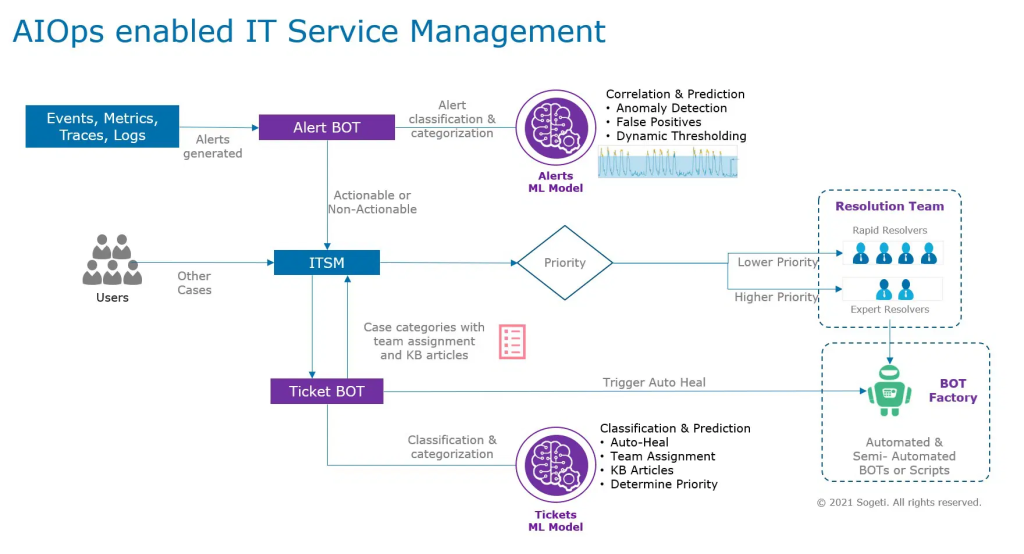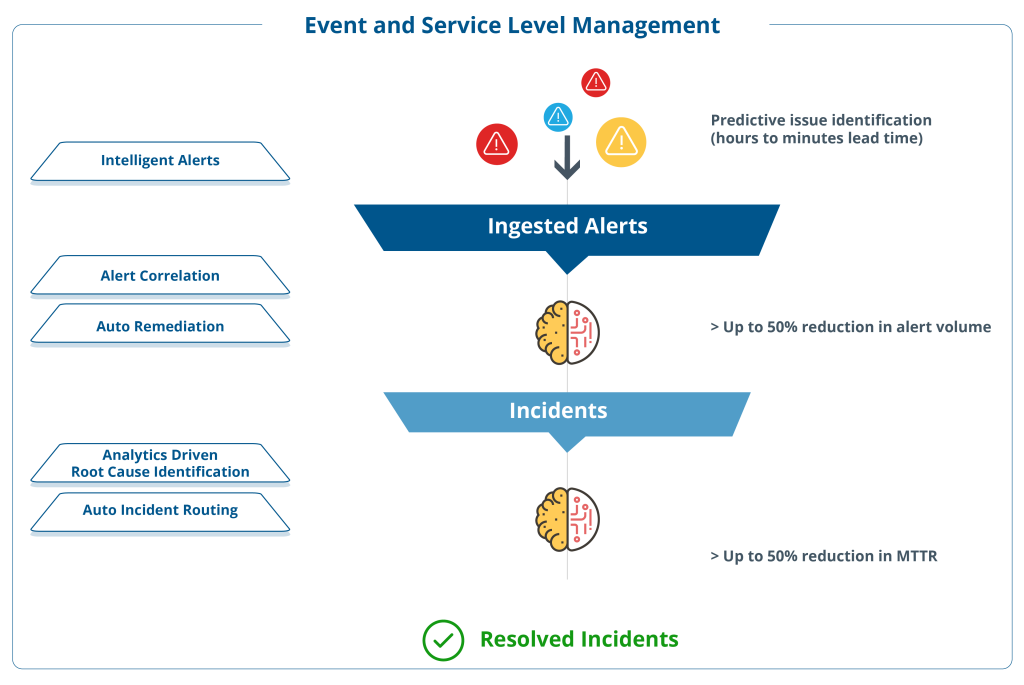
Have you ever heard of AIOps? It’s a relatively new buzzword in the IT industry that stands for Artificial Intelligence for IT Operations. AIOps is a set of technologies that combines machine learning, data analytics, and automation to improve IT operations and service management. In this article, we’ll explore the benefits of AIOps for service management and how you can start using it in your organization.
What is Service Management?
Service management is the process of managing the delivery of IT services to end-users. These services can be anything from software applications to hardware devices. The goal of service management is to ensure that these services are delivered efficiently, effectively, and reliably. Service management is typically performed by an IT service management (ITSM) team.
What are the Challenges of Service Management?
Service management can be a challenging task. IT teams are often responsible for managing a wide range of services, and each service can have its own set of complexities. Some of the common challenges of service management include:

- Service outages and downtime
- Service disruptions and interruptions
- Service requests and incidents
- Service performance and capacity issues
- Service level agreements (SLAs) and compliance requirements
To address these challenges, IT teams need to have a holistic view of their IT environment. They need to be able to monitor, analyze, and optimize their IT services in real-time.
How Can AIOps Help with Service Management?
AIOps can help IT teams overcome these challenges by providing them with real-time insights into their IT environment. AIOps uses machine learning algorithms to analyze vast amounts of data from IT systems and applications. It can identify patterns, anomalies, and trends that are not visible to the human eye. AIOps can also automate routine tasks such as incident detection, root cause analysis, and resolution.
Here are some of the ways that AIOps can help with service management:
1. Proactive Monitoring and Alerting
AIOps can monitor IT systems and applications in real-time and alert IT teams when issues arise. It can detect anomalies and patterns that are not visible to the human eye. AIOps can also prioritize alerts based on their severity, impact, and likelihood.
2. Incident Management
AIOps can automate incident detection, root cause analysis, and resolution. It can identify the root cause of an incident and suggest the best course of action to resolve it. AIOps can also learn from past incidents and improve its decision-making capabilities over time.
3. Capacity Planning and Optimization
AIOps can analyze historical and real-time data to predict capacity and performance issues. It can suggest ways to optimize IT resources and prevent capacity issues from occurring. AIOps can also provide insights into application dependencies and resource utilization.
4. Compliance and Security
AIOps can help organizations comply with regulations and security standards. It can identify security threats and vulnerabilities and suggest ways to mitigate them. AIOps can also monitor compliance with SLAs and other service level agreements.
How to Get Started with AIOps for Service Management?
Getting started with AIOps for service management can be a daunting task. Here are some steps that you can follow to get started:

- Identify the IT services that you want to monitor and manage using AIOps.
- Choose an AIOps platform that meets your organization’s requirements.
- Identify the data sources that you want to integrate with the AIOps platform.
- Train the AIOps platform to learn from your IT environment.
- Define the KPIs and metrics that you want to monitor using AIOps.
- Set up the alerts and notifications that you want to receive.
- Monitor the performance of the AIOps platform and fine-tune it as necessary.
Conclusion
AIOps is a powerful technology that can help IT teams improve their service management capabilities. It can provide real-time insights into IT systems and applications, automate routine tasks, and improve decision-making capabilities. By adopting AIOps, IT teams can enhance their service delivery, reduce downtime, and improve customer satisfaction. So, if you haven’t already, it’s time to start exploring the benefits of AIOps for service management.
